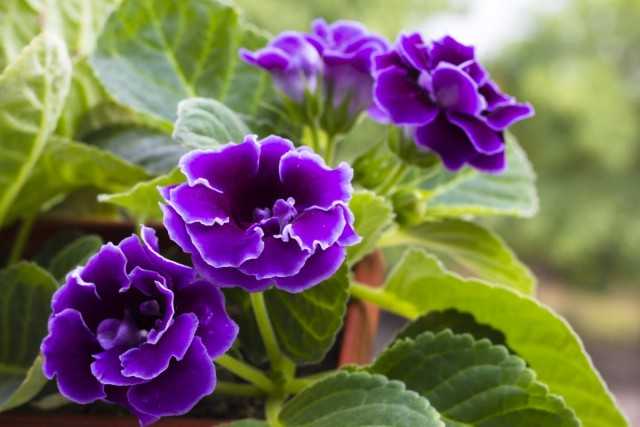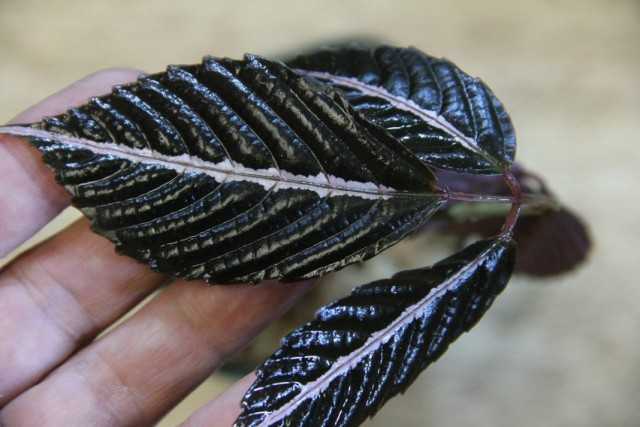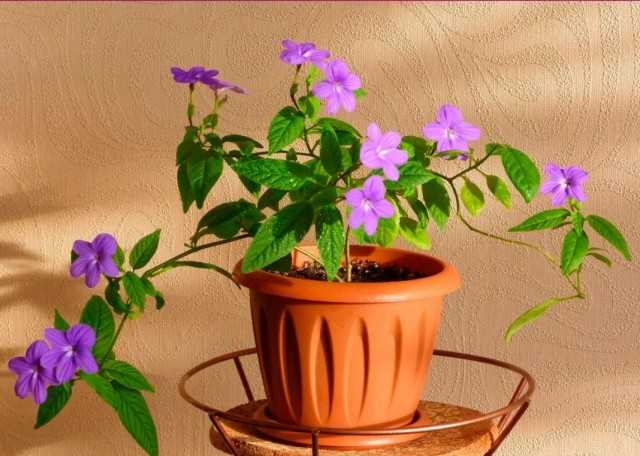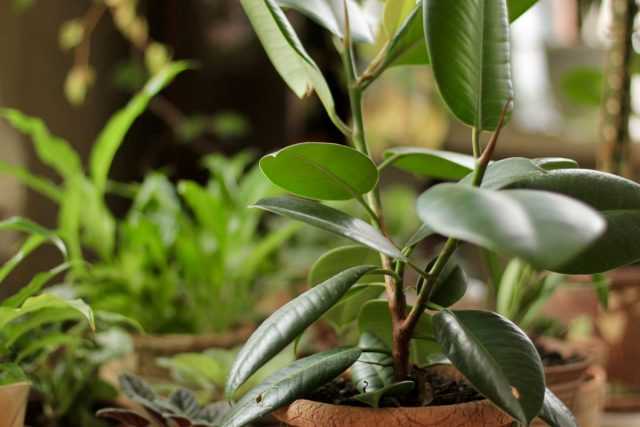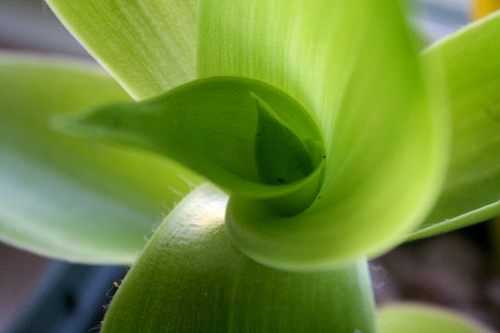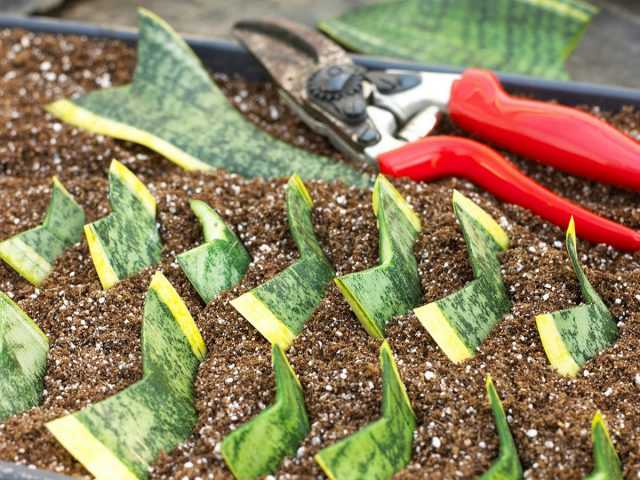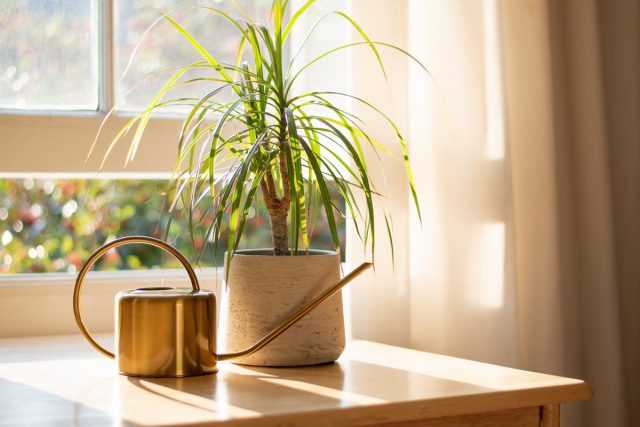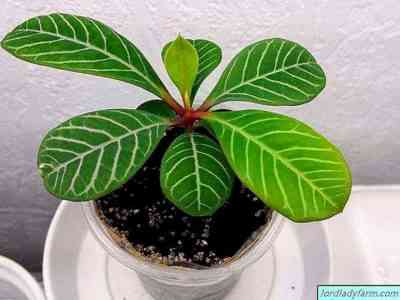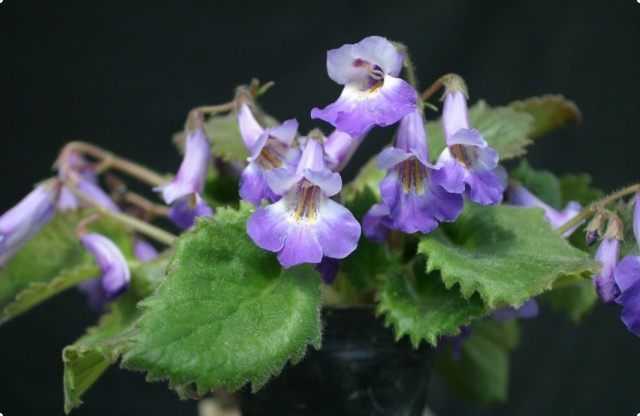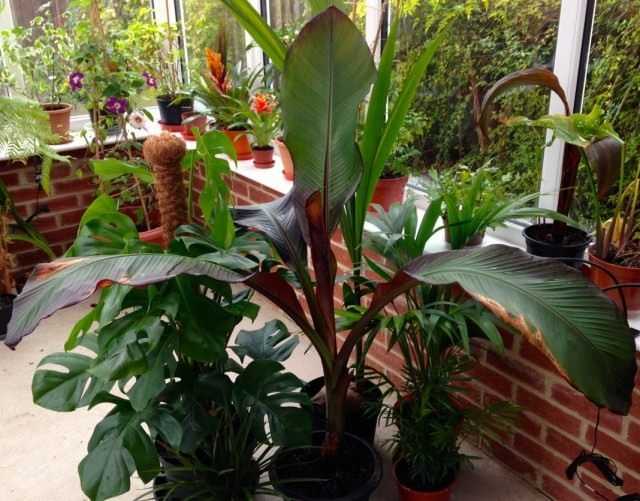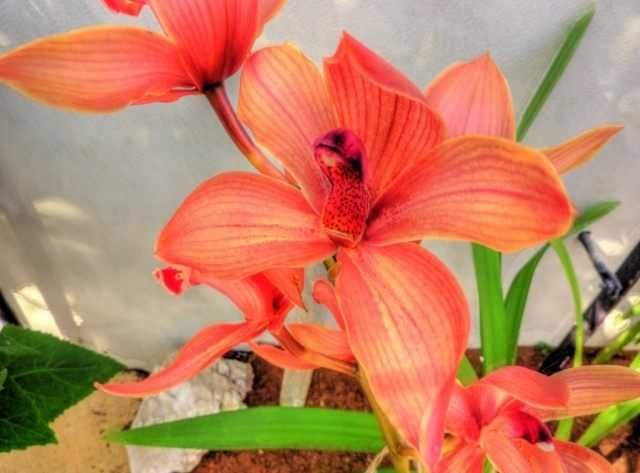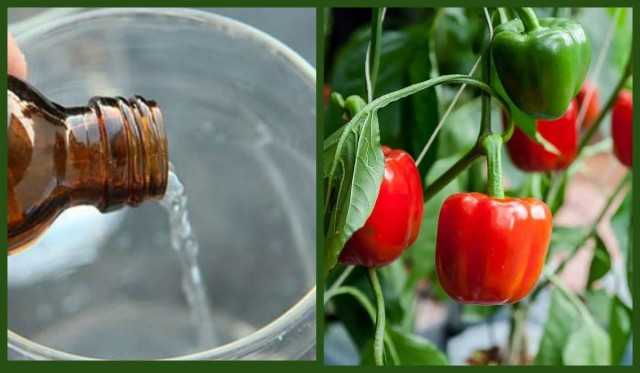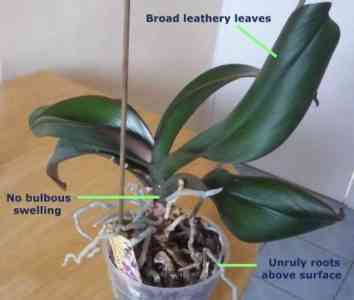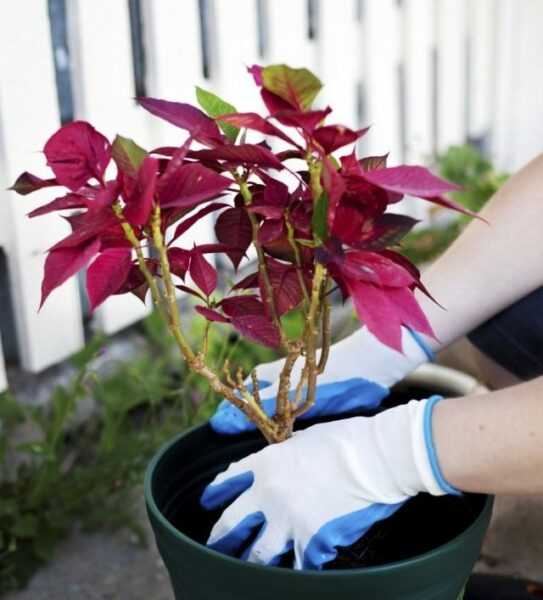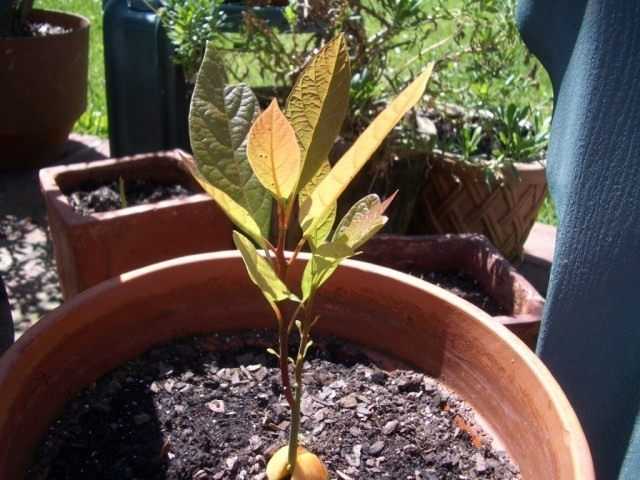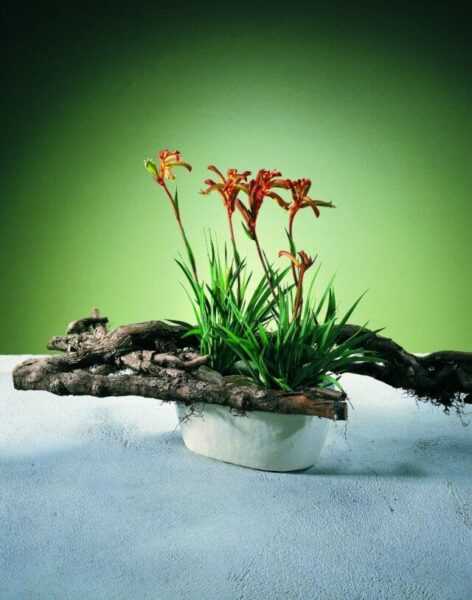Hatiora saliciform, or Hatiora saliciform, or Hatiora saltwort (Hatiora salicornioides) Is an unusual succulent shrub cactus. An epiphytic plant native to the tropics of Brazil has become popular among flower growers due to its unusual stem structure and incredibly beautiful, abundant flowering.
Hatiora salicata, or Hatiora saliciform, or Hatiora solyanka
The stems of Hatiora consist of many segments, which do not exceed 3 millimeters in diameter and reach only 2-2,5 centimeters in length. Under indoor conditions, this cactus is used in ampelous plantings, since thin stems no more than 40 centimeters long gradually droop under the weight of their own weight, forming a lush bush. Small yellowish-orange or salmon-colored flowers appear in the spring months at the tips of the slender shoots of the plant.
During the flowering period, adult representatives are characterized by a special decorative effect and become the pride of the owner. After 2-3 months, tiny berries appear in place of the faded buds.
Contents:
Caring for the hathiora saline at home
Lighting
Hatiora feels great in bright light, but it needs to be protected from direct sunlight. The ideal location would be east-facing windows. For successful cultivation on the south and west windows, you should protect the cactus from the sun by shading it. It is not recommended to place on northern windows, as flowering may be less decorative, be characterized by a small number of flowers, or will not occur at all.
Temperature, humidity and watering
In order for Hatiora to fully develop and bloom regularly, it is necessary to recreate conditions similar to the usual natural ones. In summer, the optimum temperature is 20-22 ° C. In autumn and winter, it is better to keep it at 12-15 ° C. If it is not possible to provide the desired temperature range, then you should take care of increasing the humidity in the room. With insufficient environmental humidity, the plant may begin to shed buds and parts of the shoots.
Unlike many cacti, Hatiora needs relatively high air and soil humidity. Do not bring the earthen clod in the pot to dry completely, spray the plant once every 2-3 days. You need to be especially careful about this in the hot season.
Watering a tropical cactus is best done with rainwater. It is also possible to use settled water with neutral or soft PH. During vegetative growth and flowering, Hatiora requires a fairly intensive watering. In this case, it is still worth making sure that the water does not stagnate in the pot. This can cause root rot. If the soil is too dry, then the flower will begin to fade. It will be quite difficult to save it after a long absence of moisture.
After the end of flowering, the dormant stage begins. At this time, it is necessary to ensure a decrease in the temperature of the content and significantly reduce the amount of watering. Stimulating the next bloom is easy enough. One has only to raise the ambient temperature, resume watering and apply fertilizer.
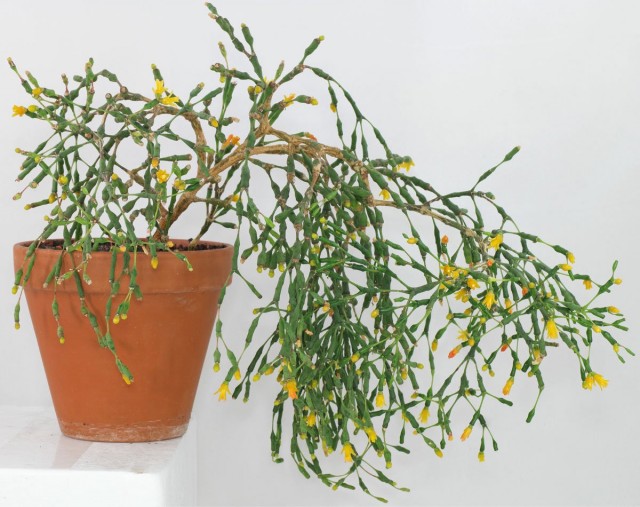
Top dressing of Hatiora saline
After resting, Hatiora needs feeding. It is best to use mineral fertilizers with a high content of potassium and phosphorus. Phosphorus contributes to the growth of green mass, and potassium stimulates flowering and gives strength. Top dressing should be done every 2 weeks. When choosing a fertilizer, make sure it has a minimum nitrogen content. This trace element has a negative effect on the cactus root system and can cause significant harm to it.
Soil and transplant
Peat soil is suitable for planting Hatiora. Under natural conditions, it grows in soil, the main composition of which is leaf humus, peat, sand and sod land. If it is possible to prepare just such a composition, then the plant will feel excellent, develop intensively and delight with flowering. This type of cactus will not grow in poor soils. The use of a heavy substrate with high acidity and poor water permeability is unacceptable for growing a refined cactus.
Immediately after flowering, young plants are transplanted. This should be done annually for 3-4 years. With age, the root system begins to develop less intensively. Then the plant can be transplanted 1 time in 2-4 years as needed to replace the soil.
Reproduction of hatiora saline
Propagated by Hatiora, as a rule, by cuttings. It is enough to separate a piece of the stem about 5 centimeters long from an adult plant, put it in a solution with a stimulant for the formation of roots for several hours, put it under a jar or in a mini-greenhouse. After 2-3 weeks, the stalk will begin to grow. This suggests that he has given roots and is able to develop independently.
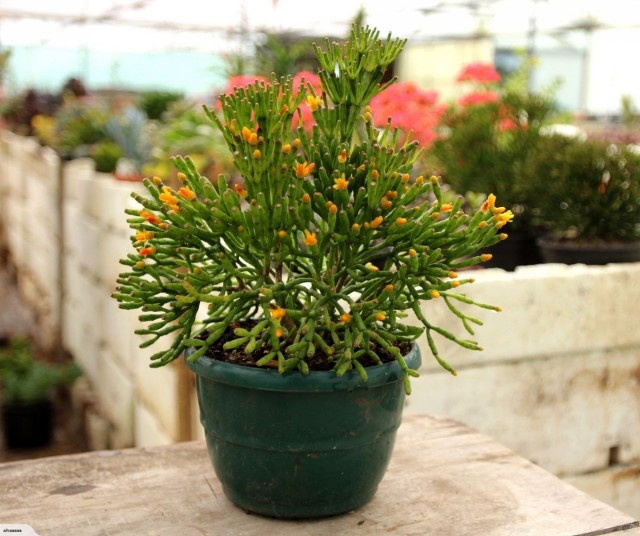
Companion plants
Among the many varieties of cacti, Hatiora stands out for its special appearance. It will look harmonious in a company with ferns, which require high humidity.
Little tricks
To obtain the best possible result when growing Hatiora during the summer months, the plant can be hung out in the open air. You should choose places where the cactus will not be exposed to direct sunlight.
Natural humidity and daily temperature differences have an extremely favorable effect on the general condition of a tropical plant. The similarity of the natural habitat contributes to the subsequent lush flowering, the formation of many shoots.

